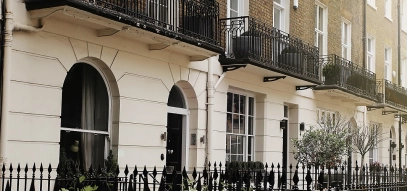In previous articles, we have looked at lease modifications and provisions in respect of future operating lease rentals. In our final article in this series, we look at where a tenant looks to exit a site by assigning or terminating the lease.
Accounting purposes
- The lease payments payable to the lessor (landlord) are recognised in the profit & loss account under FRS102 and they are included as part of the measurement of the lease liability under IFRS.
- It should be noted that payments made between the original lessee and new lessee (which may be in the form as an incentive payment) are not accounted for in accordance with IFRS16. Such payments are recognised in the profit and loss account in the period in which they are incurred.
- In addition, there are often situations whereby the assignor (original lessee) may guarantee the assignee’s (new lessee) ability to make lease payments to the landlord. This would be disclosed as a contingent liability by the assignor.
Direct tax
- For the tenant, it is necessary to determine if the amount of the provision (or any payment for assignment or surrender) is capital or revenue in nature.
- A lease interest is regarded as a fixed capital asset of the business for tax purposes and, generally, no corporation tax deduction on revenue account is available where the business does not comprise or include buying and selling leases.
- Unfortunately, this will remain the case even when the disposal is for sound business reasons, including cases where it is uneconomic to retain the lease.
- Any tax deduction for such a payment would only be available when the business is sold or on cessation of the business.
- However, it may pay to closely examine the terms of the lease agreement to determine whether it is possible to reach agreement with the landlord to end the contract, subject to a payment that would satisfy the criteria for being a revenue payment. The landlord is likely to be amenable to such a payment as the receipt for the landlord is likely to be revenue in nature, in whatever form it is received (so the position for the landlord would be unaffected).
- If the lease is assigned by an existing tenant and they make a payment to a new tenant to induce them to accept the lease, that is not normally a reverse premium (as they were not the original grantor of the lease). It may, however, be a revenue payment, dependent on the facts.
- One scenario may be where the payment is compensation for a higher rent charge. For the outgoing tenant this will relate to the cost of managing future rental costs on the lease. For the incoming tenant this will be a revenue receipt but taxed in line with the accounting treatment, most likely to be over the remaining term of the lease.
- It may be possible for the inducement payment to be treated as a contribution payment to expenditure of the incoming tenant on plant or machinery qualifying for capital allowances. In such a case it may be that the outgoing tenant can claim capital allowances on the contribution amount. The incoming tenant will not be taxed on a revenue receipt but will have had its capital expenditure on plant or machinery paid for.
- There may therefore be significant advantages to entering into negotiations with counterparties with a full understanding of the tax position(s) – once the legal forms of payments are agreed, the tax treatments are likely to be fixed and any potentially preferable tax treatments would not be available on a retrospective basis.
VAT
- Inducements and payments connected with an assignment of a lease may well not be a supply for VAT purposes, and so will be outside the scope of VAT.
- However if the incoming tenant does something in return, other than accepting to be bound by the terms of rental agreement (for example act as an anchor tenant to attract other tenants or finance), then there will be a VATable supply (for example see HMRC guidance at VATSC05862).
- The VAT treatment of a surrender payment, or early termination payment, will generally follow the VAT treatment of the property interest (and so be taxable or exempt depending on whether or not the landlord has made the option to tax the land interest).
- A payment by a tenant to a landlord made at the end of the lease in respect of dilapidation's to restore the property to its original condition may well not be a supply and if so, would be outside the scope of VAT (see VAT Notice 742 section 10.12).
SDLT
- Reverse premiums, which include payments by a tenant to a landlord to accept a surrender and payments by an assignor to an assignee to accept an assignment, are not chargeable consideration and therefore no SDLT liability would be expected to arise.
- It should be noted that the definition of reverse premium for SDLT purposes is not the same as that for VAT purposes.
- Payments made (or deemed to be made) by a landlord or assignee will, however, give rise to an SDLT liability, if above the nil rate band.
Get in touch
Please note there may be other tax and accounting issues to consider, and this can be a complex area to manage, so please do take further advice where necessary and get in touch using our enquiry form below.
Contact us today
